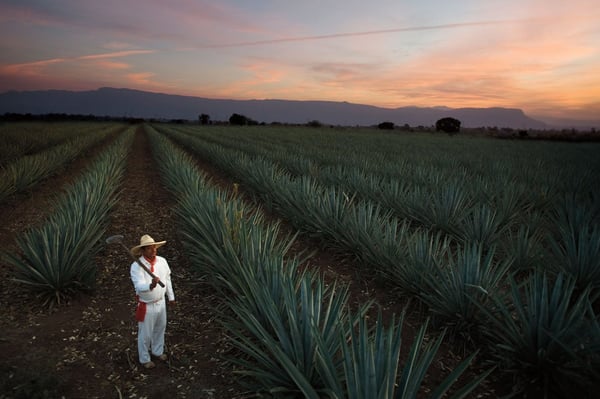
In my previous blog, I wrote about some of the agave production processes that we carry out in order to grow and harvest the best agave possible. These processes helped us get the international quality certification known as ISO 9001 and are the following:
- Land Selection
- Preparation of the land
- Planting of the agave
In this blog post, I will summarize the processes that follow these first three, so that we can better understand them and acknowledge thus, the importance that it has to do it all right, from the very beginning. This is what helps us have excellent crops.
Next Steps
4.- Fertilization
In this process, we intend to achieve the best quality possible in the Fertilization of our fields by using both machinery and hand labor. This process begins with the elaboration of a weekly plan of activities at which, according to a previous sampling of the land, the agave specialist leaders give priority to those lands with the greatest need for fertilization.
Once the lands to be fertilized are registered per week day, we then proceed to request to the warehouse manager, by means of an exit form, the amount of fertilizer needed in order to cover the hectares to be fertilized. They are fertilized either by hand or with machinery.
- If with machinery, the trained tractor driver adjusts the amount of fertilizer according to the revolutions of the engine, following the instructions on the application of fertilizer. This is how the tractor driver applies the perfect dose for each case.
- If by manual labor, the process is pretty much the same, the only difference is that the fertilizer is applied by a person who holds a container with the fertilizer and spreads it all along the land with his hands.
It is worth mentioning that this manual activity is carried out with an adequate protection equipment in order to keep the worker safe from damage, since in Sauza, we care a lot about the safety of our employees.
We also care about the environment, which is why once the employees are done applying these agrochemicals, they make sure to apply a triple washing process to the container, so that they can later to send all the empty agrochemicals containers to the collection center. There, they will be given a final suitable destination.
5.- Weed Control
What we want to achieve in this process is the quality in the control of weeds and, just like in the previous process, we carry it out by hand labor or with machinery. The difference between them are:
- With machinery- It is carried out by means of a tractor, following the standardized procedures.
- Hand labor- Our workers remove the weeds by hand.
These two sub-processes are carried out after having made a weekly plan that identifies and gives priority to the lands with the greatest need of a weed control solution.
6.- Pests and Diseases Control
What we want in this process is to control the pests and diseases that our agave plant might have, because if we fail to control them, it obviously ends up affecting the quality of our agave. That is why we follow standardized processes and we also carry them out by machinery or by hand labor, according to the needs of our properties.
This process follows specific catalogs and formats, which are carefully elaborated and established in order to make sure that this control meets the established standards and thus, ensure the good quality of our raw material up to the moment when it reaches its final destination.
7.- Cultural Activities
We call this process Cultural Activities since several different activities are carried out in order to take care of our lands and their surroundings, as well as to take care of our plants and their surroundings. All of which is done in order to make sure we achieve the best quality in our agaves. To mention some of these activities that we do:
- Fence repair
- Repair of roads
- Removing the flower or quiote
- Draining
- Removing rocks
- Desbote or removing an agave's shoot
8.- Jima
This is the last process of the agave production. Jima is how we call the harvesting of the agave. After the Jima, we can provide the tequila factory with the raw material that they need for the production of tequila. This process is carried under the quality standards needed in order to make sure that our raw material
- Is produced with good quality
- Arrives to its destination with the same good quality properties with which it left the premises
All this is registered in standardized records.
This is how we manage to keep our agaves as pure and unpolluted as possible and, therefore, our tequilas.
We invite you to come to Casa Sauza and learn more about our tequila production processes.
.png?width=50&height=50&name=10.CS-Redondo%20(1).png)
